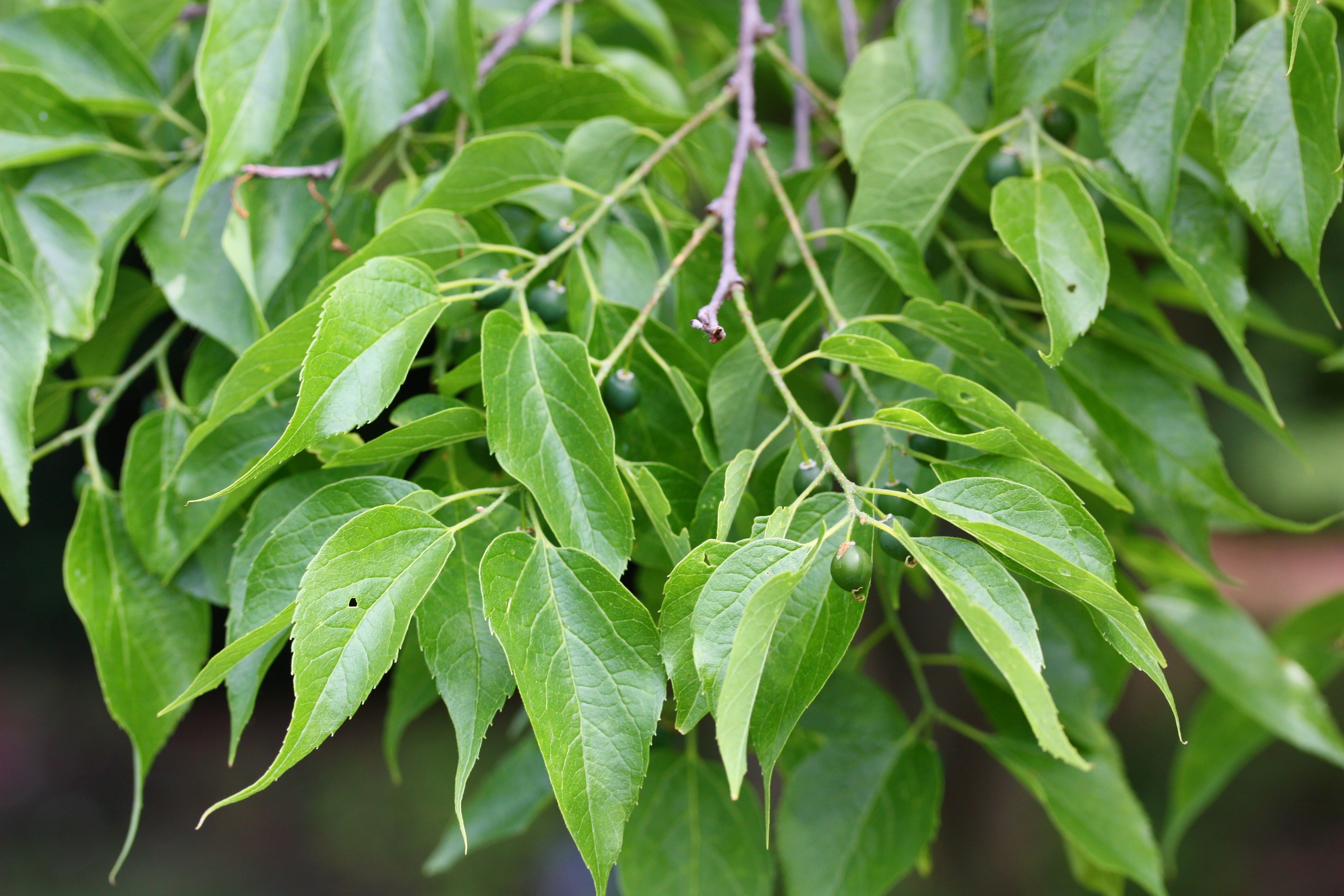Hackberry tree
(Celtis occidentalis)

Description
Celtis occidentalis, commonly known as the Hackberry tree, is a deciduous tree belonging to the Ulmaceae family. The tree is native to North America, and it is known for its hardiness and adaptability to a wide range of growing conditions. In this article, we will explore the various aspects of Celtis occidentalis, including its physical characteristics, habitat, uses, and cultural significance. Physical Characteristics The Hackberry tree is a medium to large-sized tree that can grow up to 80 feet in height and 3 feet in diameter. The tree has a broad, spreading crown that can be as wide as the tree is tall. The leaves of the Hackberry tree are simple, alternate, and ovate in shape. They are typically 2 to 4 inches long and 1 to 3 inches wide. The leaves are dark green in color and have serrated edges. The tree produces small, inconspicuous flowers that are greenish-yellow in color. The flowers bloom in the spring, and they are followed by small, berry-like fruits that are orange-red in color. The fruits are about ¼ inch in diameter and are a favorite food source for many birds. Habitat The Hackberry tree is native to North America and can be found throughout the eastern and central parts of the continent. The tree is known for its adaptability and can grow in a wide range of soil types and growing conditions. The tree can be found growing in moist to dry soils, in full sun or partial shade, and in both urban and rural environments. Uses The Hackberry tree has a long history of use by humans. The Native Americans used the tree for medicinal purposes and made tea from the bark to treat a variety of ailments, including coughs, colds, and sore throats. The tree was also used for making bows, as the wood is strong, flexible, and durable. Today, the Hackberry tree is used for a variety of purposes. The wood is used for furniture, cabinetry, and flooring. The tree is also used as a shade tree and as a landscaping plant due to its hardiness and adaptability. Cultural Significance The Hackberry tree has played an important role in the culture of many Native American tribes. The tree was considered a sacred plant by the Hopi, who used the wood for making Kachina dolls, which were believed to have spiritual significance. The Navajo used the bark of the tree to make a ceremonial beverage called yucca fruit drink. In addition to its cultural significance, the Hackberry tree has also been used in folklore and mythology. In Celtic mythology, the tree was associated with the goddess Brigid, who was said to protect the tree and its fruit. In Norse mythology, the tree was associated with the god Odin, who was said to have hung from its branches for nine days and nights to gain wisdom and insight. Conclusion Celtis occidentalis, or the Hackberry tree, is a versatile and hardy tree that is native to North America. The tree has a wide range of physical characteristics, can grow in a variety of habitats, and has been used for many purposes throughout history. The tree has cultural significance in many Native American tribes and has played a role in folklore and mythology. With its adaptability and durability, the Hackberry tree will likely continue to play an important role in the landscape and culture of North America for many years to come.
Taxonomic tree:







